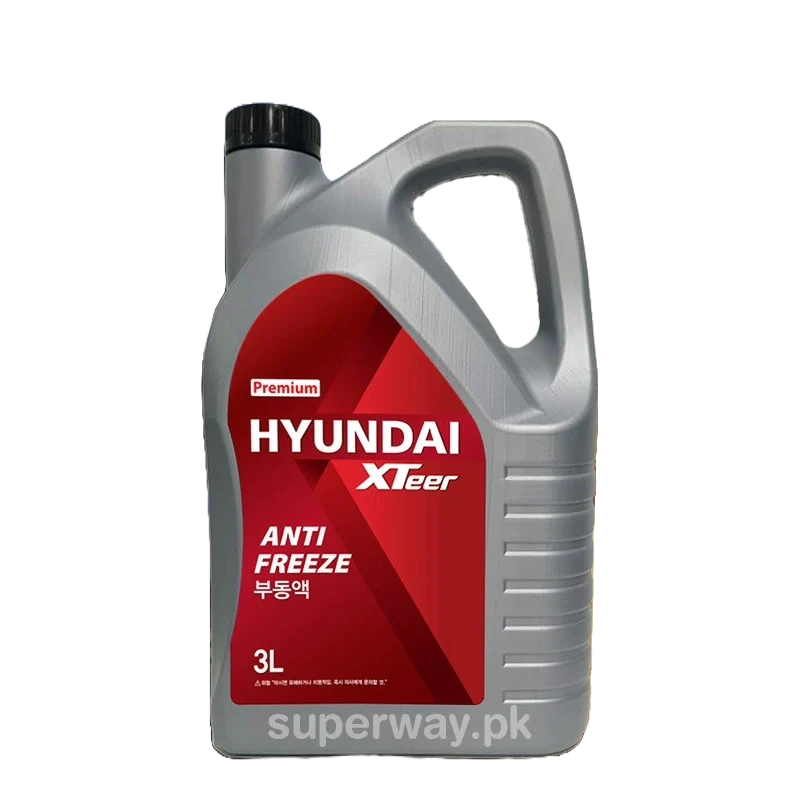
HYUNDAI XTeer Antifreeze Coolant 3L
If you are the kind of driver who prefers to buy antifreeze concentrates instead of ready-to-use solutions or are just going to use such a product for the first time, this article will be useful to you. In it you will find a brief "educational program" on the topic of in what proportion and how best to mix a concentrated product with water, as well as why the principle "more is better" in the preparation of coolant does not always work.
Why do you need antifreeze?
A bit of a base. In order to keep the temperature inside the internal combustion engine stable, modern cars are designed to have cooling systems in them. To put it simply, it is a set of hoses and tubes through which a fluid is run with the help of a pump, the main purpose of which is to remove excess heat from the motor. At the same time, this liquid must be resistant to frost in order to remain fluid and fully perform its work in winter. For obvious reasons, ordinary water cannot perform the role of such a thermostat, since it freezes at zero degrees, and boils at one hundred degrees - that is, exactly in the conditions that are normal for the engine.
Therefore, the coolant used in the car is not pure water, but its mixture with antifreeze - a special technical reagent resistant to both low and high temperatures. Antifreeze can be based on propylene or ethylene glycol. In most of the products available on the modern market, it is still the latter, because, all other things
Magic in a mixed form
So, water in its pure form freezes at 0°C. But if you add 30% of ethylene glycol-based concentrate to it, you can count on the fact that the resulting mixture will not freeze at minus 15°C. And if you make a solution with a ratio of water and antifreeze of 1 to 1, then it will be able to withstand frosts up to minus 40°C. At the same time, A solution that is too concentrated should not be poured into the system, as the result can be unpredictable. Judge for yourself:
How exactly do you mix?
If you have figured out the proportions, but do not quite understand how exactly the solution should be prepared, then here are a couple of recommendations:
- The cleaner the water used, the more efficient the dissolved refrigerant will be. Therefore, it is best to dissolve the antifreeze concentrate in distilled water specially purchased for this purpose.
- It does not matter at all the container in which you prepare the solution. The main thing is that it is clean, and also that it is convenient for you to pour the solution into the expansion tank later.
- Do not pour the water and concentrate into the tank one by one. Even if you know exactly the service volume of coolant and have calculated the proportions, things may not go according to plan – for example, due to the presence of residual antifreeze in the system.
- Do not add one coolant to another. In addition to ethylene glycol itself, modern concentrates also contain various additives and dyes. The additives of one antifreeze can conflict with the additives of another, resulting in precipitation.
Thus, there is nothing particularly difficult in preparing a solution for the cooling system. The most important thing in this matter is to follow the recommended proportions, use clean water and do not mix different products with each other. A properly prepared solution will not only not freeze in the fierce winter, but will also serve perfectly to dissipate heat from the engine under any load during the summer heat.
